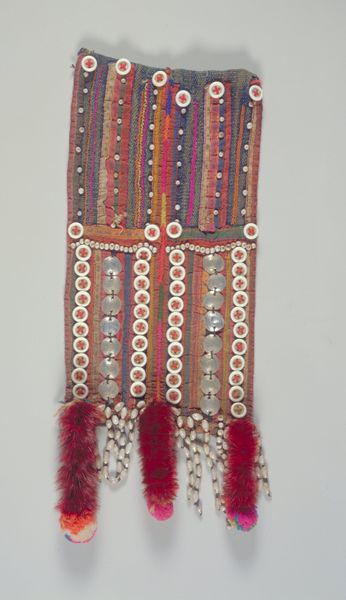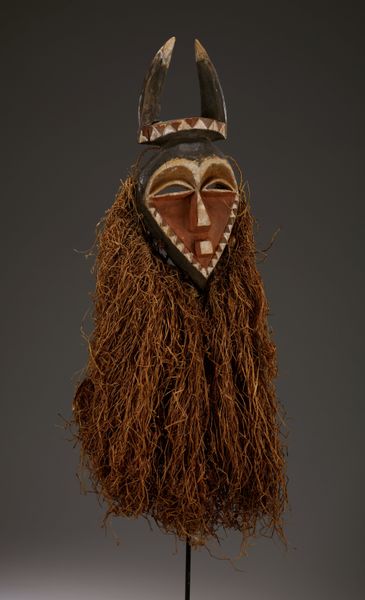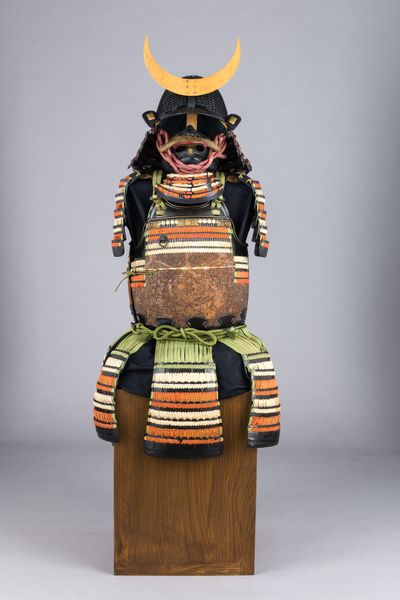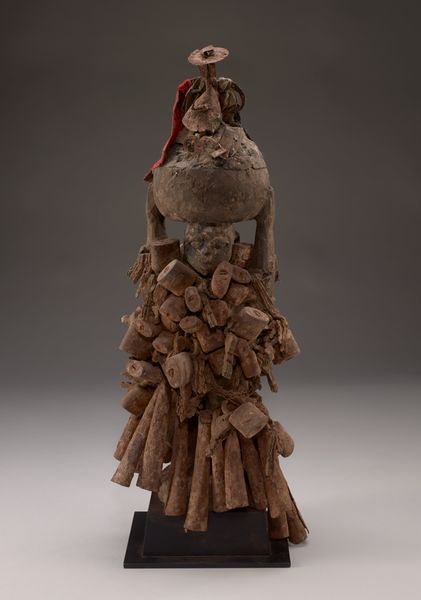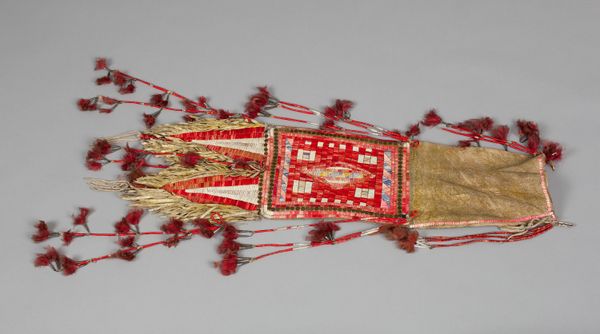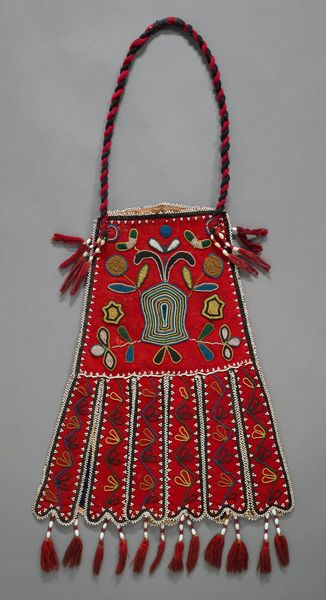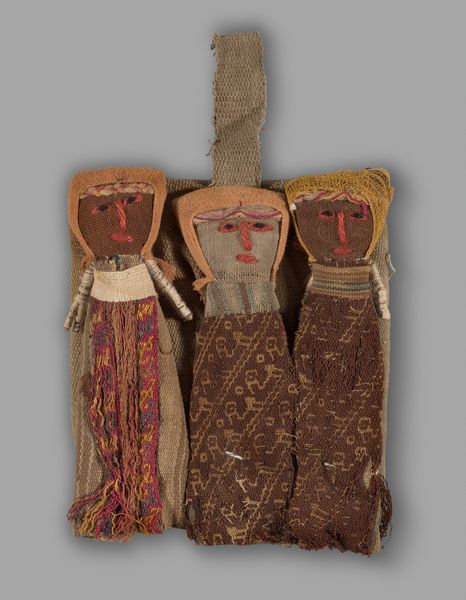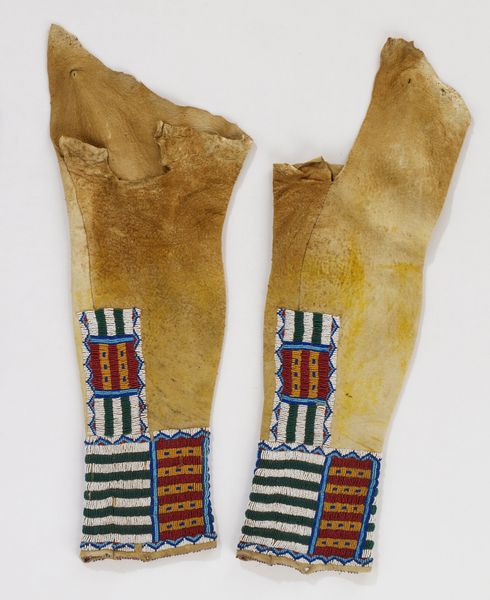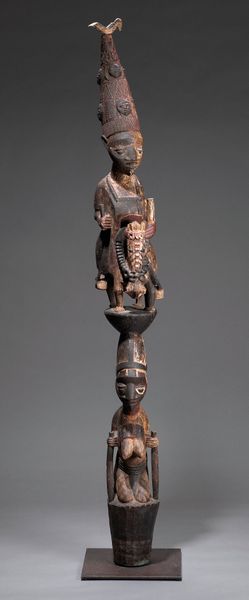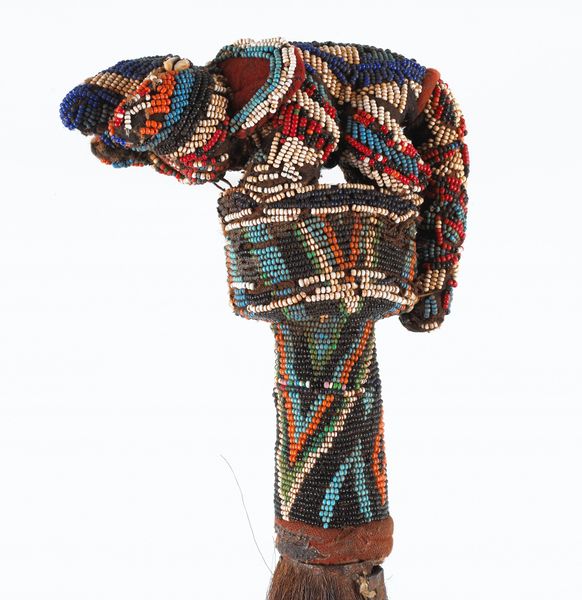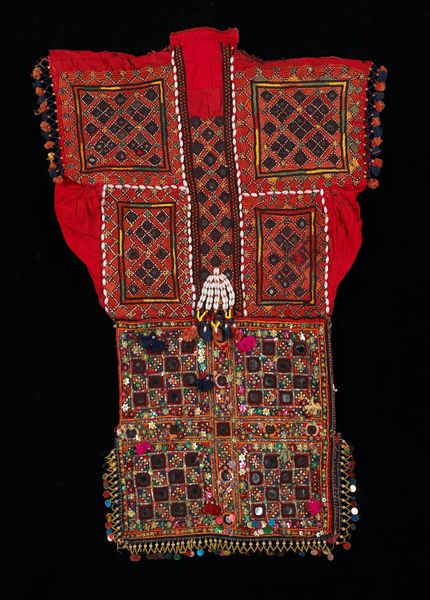
textile, sculpture, wood
#
textile
#
figuration
#
sculpture
#
wood
Dimensions: 8 3/4 x 2 x 2 1/4 in. (22.23 x 5.08 x 5.72 cm)
Copyright: Public Domain
Editor: This is a pair of dolls from the Maasai people, likely crafted sometime in the 20th century. They’re made of wood and textile and have an earthy, grounded quality, and the beaded decorations seem very intentional. What can you tell me about their story and purpose? Curator: These dolls, beautiful in their simplicity, offer a potent lens through which to examine the intersections of gender, identity, and cultural preservation within Maasai society. How do you think these materials - the wood, the textiles, the beads - might reflect the Maasai’s relationship with their environment and available resources? Editor: Well, the materials seem very deliberately chosen, as if what's readily available is being transformed into something precious... but I don't know enough about Maasai culture to elaborate further! Curator: Exactly! Consider the cowrie shells - historically used as currency and adornment. They may signify womanhood, fertility, and connection to the ocean, reflecting the complexities of value and gender roles. But look beyond aesthetics. Do you see how these figures could symbolize the role of women as keepers of tradition and culture? Editor: That's fascinating! So, they’re not just toys; they’re active participants in maintaining cultural identity? Curator: Precisely. These dolls serve as pedagogical tools, teaching young girls about their roles and responsibilities within the community, about beauty, status, and perhaps even spiritual beliefs. They resist colonial narratives that often exoticize and erase Indigenous cultures, asserting Maasai identity and agency. In what other ways could we interpret these objects through a contemporary lens? Editor: I hadn’t thought of them in terms of resistance before! Now I'm considering how something as seemingly simple as a doll can become a powerful tool for cultural preservation and a statement of identity. Curator: Yes, they make us reflect on power dynamics embedded within material culture. Looking closely, it challenges our assumptions about art, craft, and the role of women in shaping cultural landscapes.
Comments
No comments
Be the first to comment and join the conversation on the ultimate creative platform.

